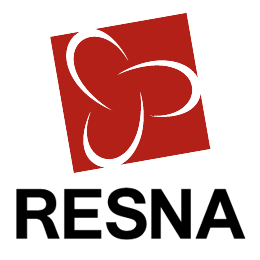Wheelchair Lateral Support Guide

Lateral trunk supports are also known as laterals, lateral supports, lateral thoracic supports, and trunk stabilizers. They are rectangular or square shaped devices that mount to the back posts of the wheelchair and rest against the user's trunk. Most often they are used in pairs, one on each side of the trunk.
Laterals come in a number of different sizes and padding densities. Size and shape will vary depending on manufacturer and style. The most common styles are planar (flat) or contoured (shaped). The amount of contouring may also vary between styles and manufacturers. Many models can be ordered with hardware that allows the lateral to swing away from the user and out of the way. This makes getting in and out of the chair much easier. Laterals are available from the wheelchair manufacturer or can be purchased from a number of aftermarket sources.
These positioning accessories are most often used to increase the user's trunk stability and balance. They can also serve as a tactile reminder. When the user comes in contact with the device they know that they are out of position and can adjust their position or request assistance. Laterals are sometimes used in an effort to control spinal scoliosis ("S" curve of the spine). This tactic may work in those cases were the scoliosis is flexible and can easily be reduced. In cases where the scoliosis is rigid, laterals may cause discomfort and tissue damage (wounds). This is especially true if the lateral is placed on the apex (high point) of the spinal curvature. That brings us nicely to the issue of placement.
If the trunk can be placed in an upright neutral sitting position, but the user can not maintain this position, then the laterals can be placed opposite each other on each side of the trunk. This will add the needed external support to hold the user in position. Many users and professionals think that the laterals have to be placed exactly opposite each other on the trunk. This is not true, and in certain cases may result in poor outcomes and in discomfort to the user. In those cases where you are dealing with a spinal curvature you need to consider uneven or oblique placement of the laterals. One lateral should be placed just under the apex of the spinal curve. The second lateral should be placed on the opposite side of the trunk and above the opposing one. This will set up the proper dynamics for reducing the curve (if flexible) and supporting the trunk.
In order to work well these devices must make contact with the trunk. If they do not make contact with the user there will be no support. If they are too tight, the user may have a problem with breathing. If they are placed too low, support is lost and the trunk may "lean" over the laterals. If placed too high they may impinge on the axilla (armpit) and cause damage to the brachial plexus, irritate the surrounding skin, and restrict shoulder and arm movement.
Advantages of Lateral Support
- Aids in trunk support and stability.
- Improves balance and posture.
- Helps maintain the user in a functional position.
- Prevents further postural decay.
- Diminishes the need for repetitive repositioning of the user during the day.
- Improves appearance.
Disadvantages of Lateral Support
- If placed too low they are ineffective.
- If placed too high they may irritate axilla, brachial plexus, surrounding tissue, and limit shoulder and arm movement.
- May be difficult to mount to backrest in proper location.
- When the pad is under pressure the swing-away release may get stubborn.
- Even contact of the entire pad against the body is difficult to realize since there are no adjustments for angling the pad in or out.
- If the user changes position the laterals will most likely no longer be aligned correctly.
- They add another layer of complexity to the entire unit.
Our service area covers most of Southern California including Los Angeles and surrounding cities.
To see a full list of cities covered in our service area please click here.
- Agoura Hills
- Alhambra
- Altadena
- Arcadia
- Arleta
- Artesia
- Avalon
- Azusa
- Baldwin Park
- Bel Air
- Bell
- Bell Gardens
- Bellflower
- Beverly Hills
- Bradbury
- Brentwood
- Burbank
- Cahuenga Pass
- Calabasas
- Camarillo
- Canoga Park
- Carson
- Cerritos
- Chatsworth
- Claremont
- Commerce
- Compton
- Covina
- Cudahy
- Culver City
- Diamond Bar
- Downey
- Duarte
- Eagle Rock
- El Monte
- El Segundo
- Encino
- Gardena
- Glendale
- Glendora
- Granada Hills
- Hawaiian Gardens
- Hawthorne
- Hermosa Beach
- Hidden Hills
- Huntington Park
- Industry
- Inglewood
- Irwindale
- Kagel Canyon
- La Canada
- La Crescenta
- La Habra Heights
- La Mirada
- La Puente
- La Tuna Canyon
- La Verne
- Lake Balboa
- Lake View Terrace
- Lakewood
- Lancaster
- Lawndale
- Lomita
- Long Beach
- Los Angeles
- Lynwood
- Malibu
- Manhattan Beach
- Marina Del Rey
- Maywood
- Mission Hills
- Monrovia
- Montebello
- Monterey Park
- Montrose
- NoHo Arts District
- North Hills
- North Hollywood
- Northridge
- Norwalk
- Oak Park
- Olive View
- Oxnard
- Pacific Palisades
- Pacoima
- Palmdale
- Palos Verdes
- Panorama City
- Paramount
- Pasadena
- Pico Rivera
- Pomona
- Porter Ranch
- Redondo Beach
- Reseda
- Rolling Hills
- Rosemead
- San Dimas
- San Fernando
- San Gabriel
- San Marino
- Santa Barbara
- Santa Clarita
- Santa Fe Springs
- Santa Monica
- Sepulveda
- Shadow Hills
- Sherman Oaks
- Sierra Madre
- Signal Hill
- Simi Valley
- South El Monte
- South Gate
- South Pasadena
- Stonehurst
- Studio City
- Sun Valley
- Sunland
- Sylmar
- Tarzana
- Temple City
- Thousand Oaks
- Toluca Lake
- Toluca Woods
- Topanga
- Torrance
- Tujunga
- Valencia
- Valley Glen
- Valley Village
- Van Nuys
- Ventura
- Vernon
- Walnut
- Warner Center
- West Covina
- West Hills
- West Hollywood
- West Toluca
- Westlake Village
- Westwood
- Whittier
- Winnetka
- Woodland Hills




 Accreditation Commission for Health Care
Accreditation Commission for Health Care
 RESNA Accredited
RESNA Accredited





